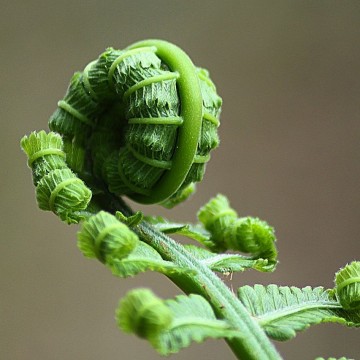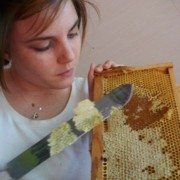Foodie Dare: Eat Fiddlehead Ferns This Spring
Wednesday, April 15, 2015

Forage
Look for lady fern fiddleheads in woodlands, at the edge of meadows, and along creek banks. Lady ferns are said to have ‘hips,’ in that the mature fronds taper in at the bottom, as compared to a sword fern which is widest at the base. What you harvest will not grow back until next year, but harvest 40% and the plant will be fine. Cut the stem an inch below the curl, or ‘crosier.’ The fronds become toxic as they unfurl and mature, so the smaller the better.
Shop
This month find them at local farmer’s markets all over the city. Whole Foods and New Seasons will stock 8 oz. packs at $4.99 for as long as this too-short season lasts. Pass over fiddleheads that are larger than a quarter, unfurled, discolored or damaged.
Cook
Ostrich ferns are rich in Omega-3s, while all varieties are rich in vitamins A and C and high in minerals like manganese. To prepare, rub the brown hairs off with a towel in a bowl of water to reveal their beautiful bright green color beneath. Fiddleheads are delicious pickled or sautéed in a spring stir-fry with spring morels and cubed sweet potato.
Recipe for Crunchy Pickled Fiddlehead Ferns:
Pressure canning fiddleheads can render the snappy fronds into limp goop. This clever overnight method seals the jars without needing to pressure can.
Ingredients
- 2 lb of the youngest, tightest fiddlehead ferns you can find
- 1 cup vinegar (apple cider, white, white wine, or champagne)
- 3 cups water
- 2 Tbsp. salt
- 1 clove of garlic, lightly crushed
- a sprig of thyme or favorite herb for each jar
- 1 inch-long peel of lemon zest
- a bowl of ice water
1. Bring the water, salt, lemon zest, garlic, and thyme to a boil, then turn off the heat and add the vinegar. Allow the mixture to infuse for an hour.
2. Bring a large pot of lightly salted water to a boil. Add the fiddleheads to the pot, turn off the heat and cook for 30 seconds. Immediately remove the fiddleheads to an ice bath to stop their cooking.
3. When the fiddleheads are cool, remove them and drain very well in a colander, pressing on them lightly to remove any excess water.
4. Pack a pint jar full of fiddleheads, leaving 1/2 inch headspace at the top of the jar. Reheat the pickle liquid to boiling, and pour into the jars, covering all of the fiddleheads, up to the very top of the jar. Screw on the lids and turn the jars upside down. Leave the jars overnight like this.
5.The next day, inspect the jars, you will find they have formed hermetic seals, just as if you were to use a water bath canner, but without the excess heat. Voila! Crunchy pickled fiddleheads. Yields 3 pint jars.
(from foragerchef.com, May 2013)

Related Articles
- 5 Ways to Serve Delicious Asparagus
- Learn to be a Chef at Portland’s Culinary Workshop
- Love on the Halfshell: Oregon Oysters




 Delivered Free Every
Delivered Free Every
Follow us on Pinterest Google + Facebook Twitter See It Read It